As the Collections Management Assistant at the Clothworkers’ Centre, the main bulk of my job is retrieving textile and fashion objects from store for visitor appointments. It’s an odd job that takes me to every niche corner of the fashion, dress and textiles world, from patchwork quilts to Gareth Pugh, Dior to doublets. One of my favourite discoveries has been raised work embroidery – an area I knew nothing about before starting in this role. Popular in the 17th century, and sometimes known as stumpwork, it was used to decorate caskets, mirror frames, and as stand alone pictures.
Every bit of it is delightful, from the cartoon faces to the oversized insects, but the best bit are the lions:
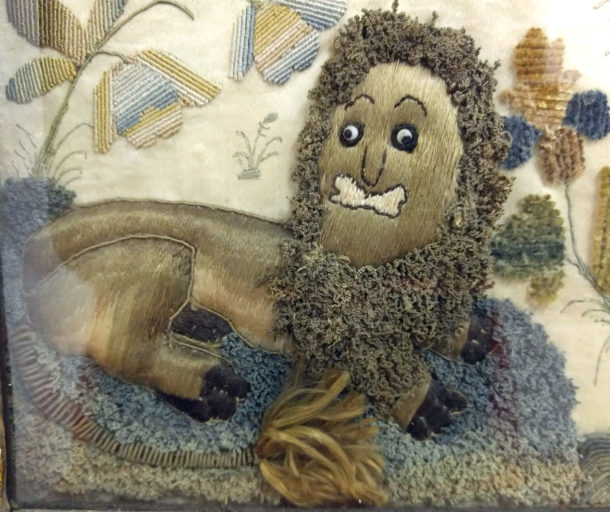
Lions were one of the royal beasts – along with the leopard, stag, and unicorn, and were sometimes used to symbolise royalty. Sometimes they were depicted just because lions are cool.
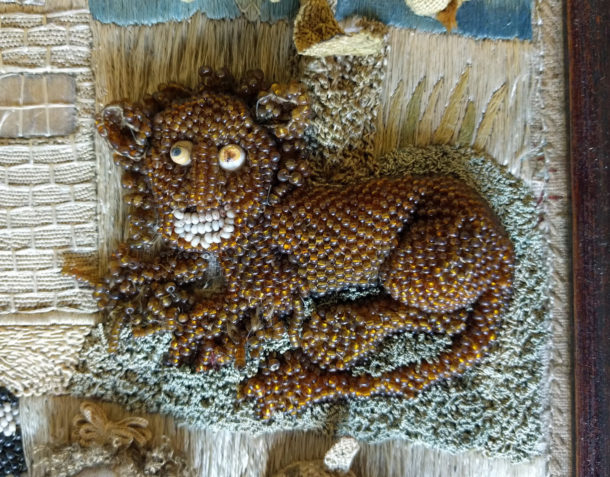
This beady fellow has the manic appearance of one who has been cooped up too long – perhaps he’s based on a Tower of London lion, where lions and other wild animals were kept from 1235 until 1835!
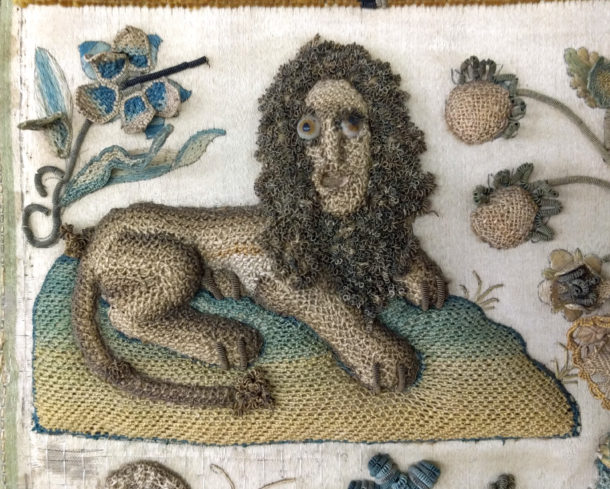
Embroideries can sometimes be traced to earlier source images. Master draughtsmen might draw up designs on silk to be sold in kit form and embroidered at home. The embroidery itself was done by young girls to practice their skills and decorate the home. She would have the artistic license to choose the type of embroidery, and the colours used, and at times whether to ignore the design completely.
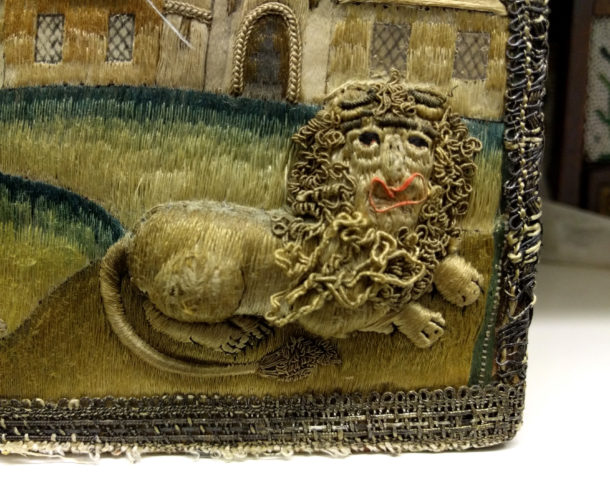
Once the casket panels had been embroidered they would be sent off to a cabinet maker, who would build your casket, complete with mirrors and secret compartments. The casket might be the only place an adolescent girl could store her most private possessions, letters and treasured items of jewellery. However the casket itself was probably built to the same model as her mother’s, meaning mum would know exactly where to look to find the secret letters! Perhaps the lions could serve to scare potential intruders away.
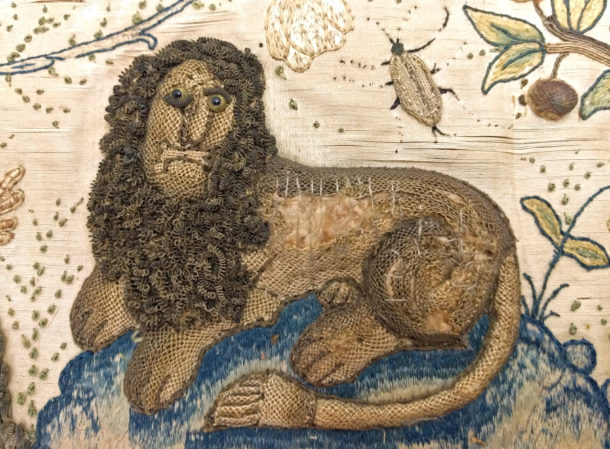
I don’t know why this guy reminds me of Sesame Street, or why he has one eyebrow above his eye and one below. I assume he looks terrified because he’s spotted that bug the size of his head.
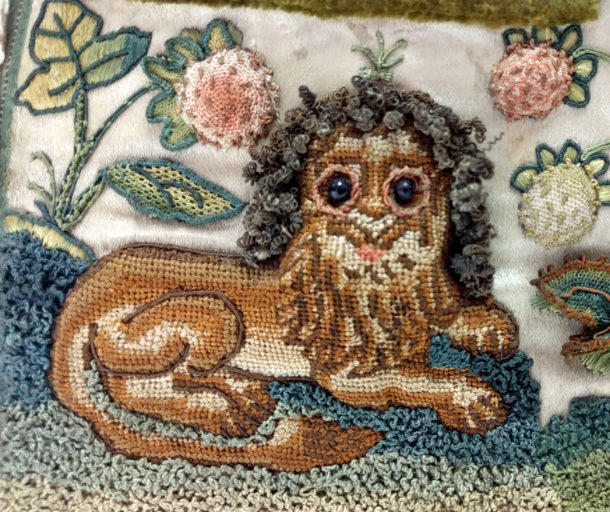
A slightly less haunting one to end on, this cutie features on one of our most popular caskets, which has been attributed to Elizabeth Coombe. This casket also features deer, parrots, and a slightly grumpy looking mermaid, but perhaps that’s a subject for another blog post.
If you would like to make an appointment to study some embroidered lions – or anything else from the V&A Textiles and Fashion collection – please email us on clothworkers@vam.ac.uk
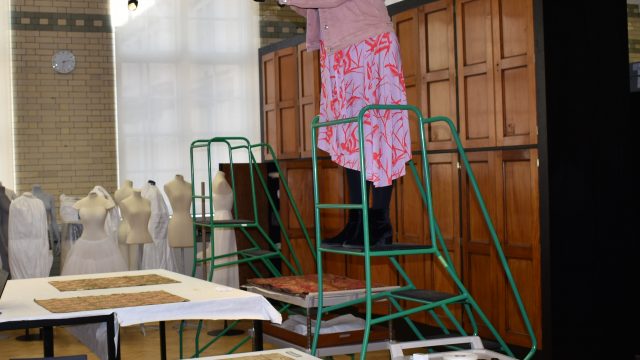
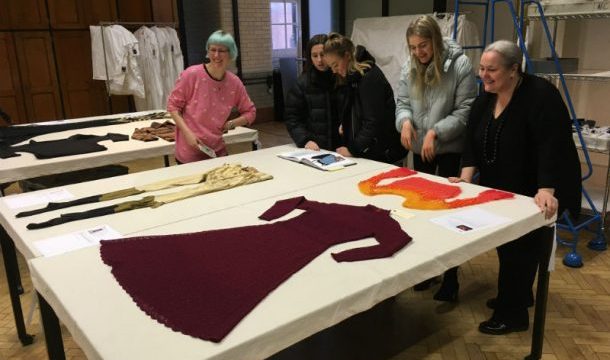
What a treat to see such beautiful
Work .thank you Ruby xx
What a fascinating glimpse into the past! This is a real treat for the eyes, thanks for sharing Ruby.
I can’t believe that they embroidered something quite like this in the 1600s. Traditional embroidery never gets old.
Delightful! Thank you. This showed up on my Twitter feed today. I had the exact same thought about the Sesame Street lion: it’s Guy Smiley!